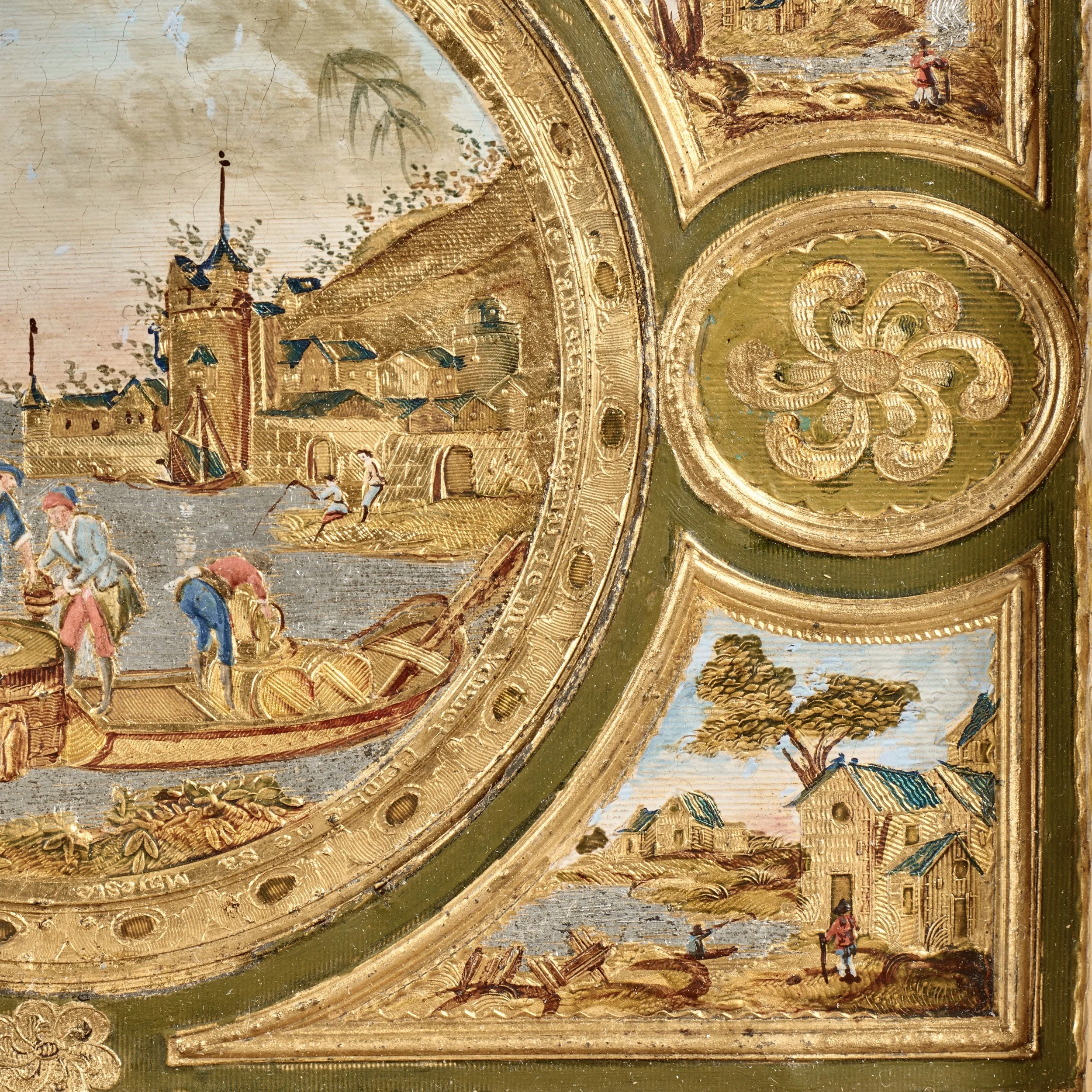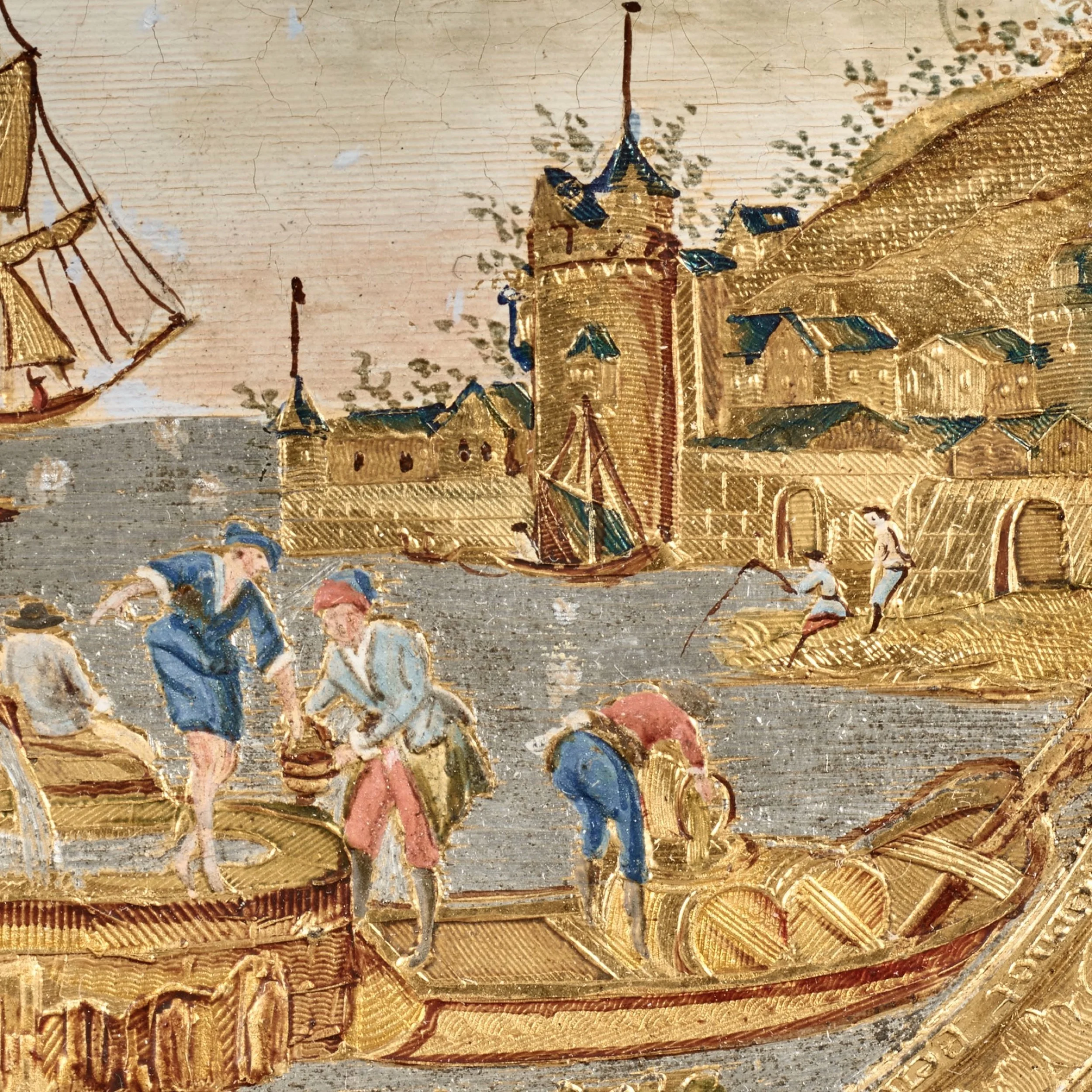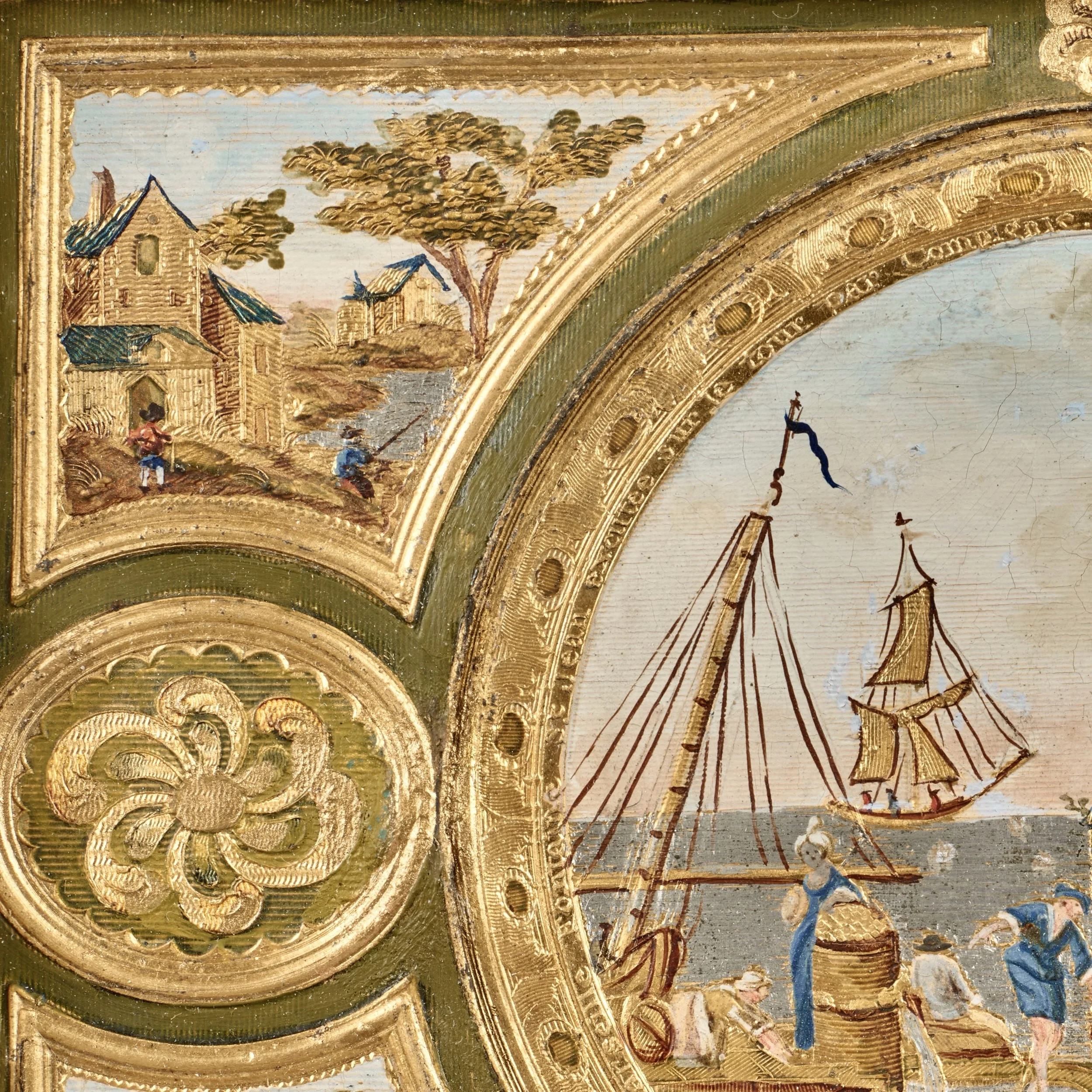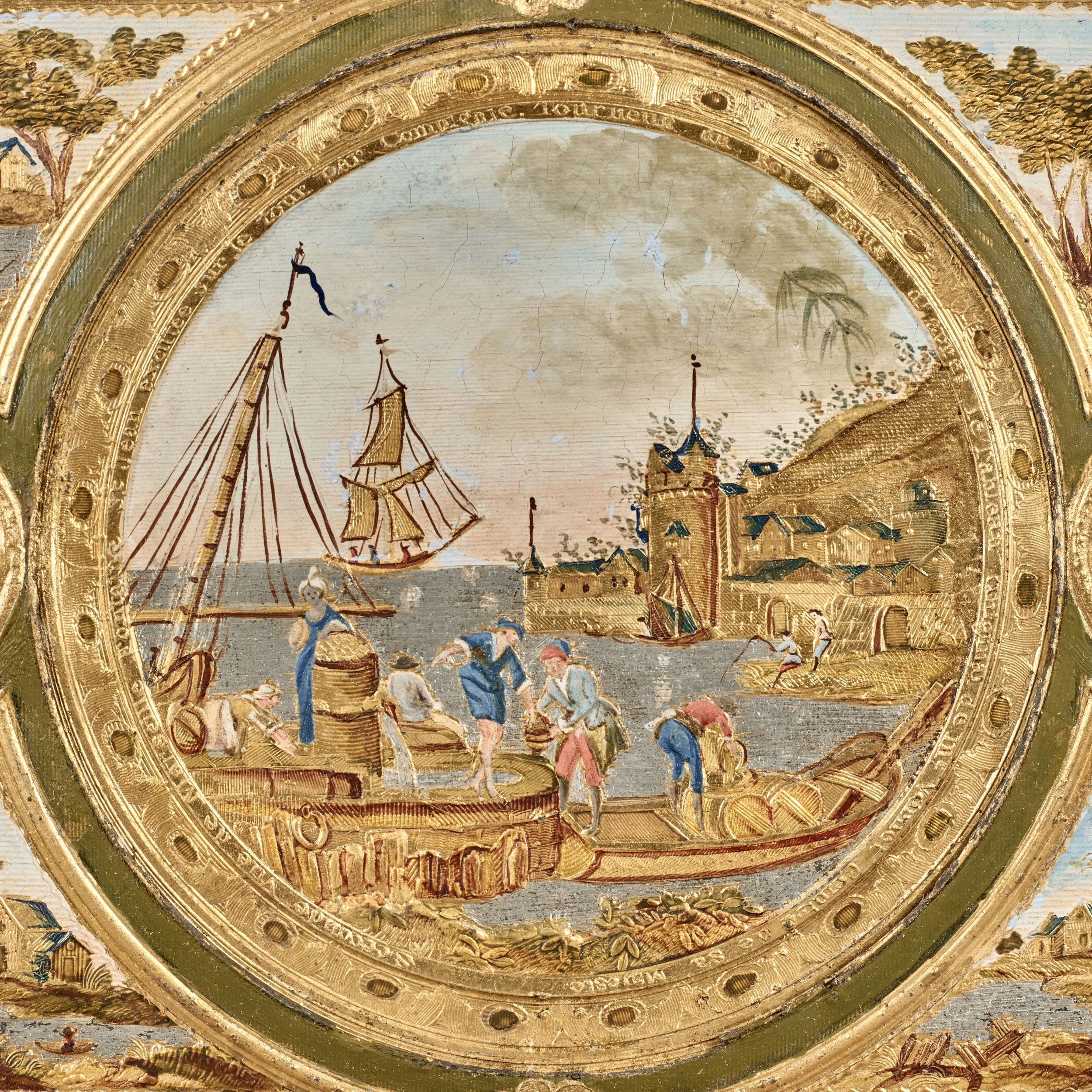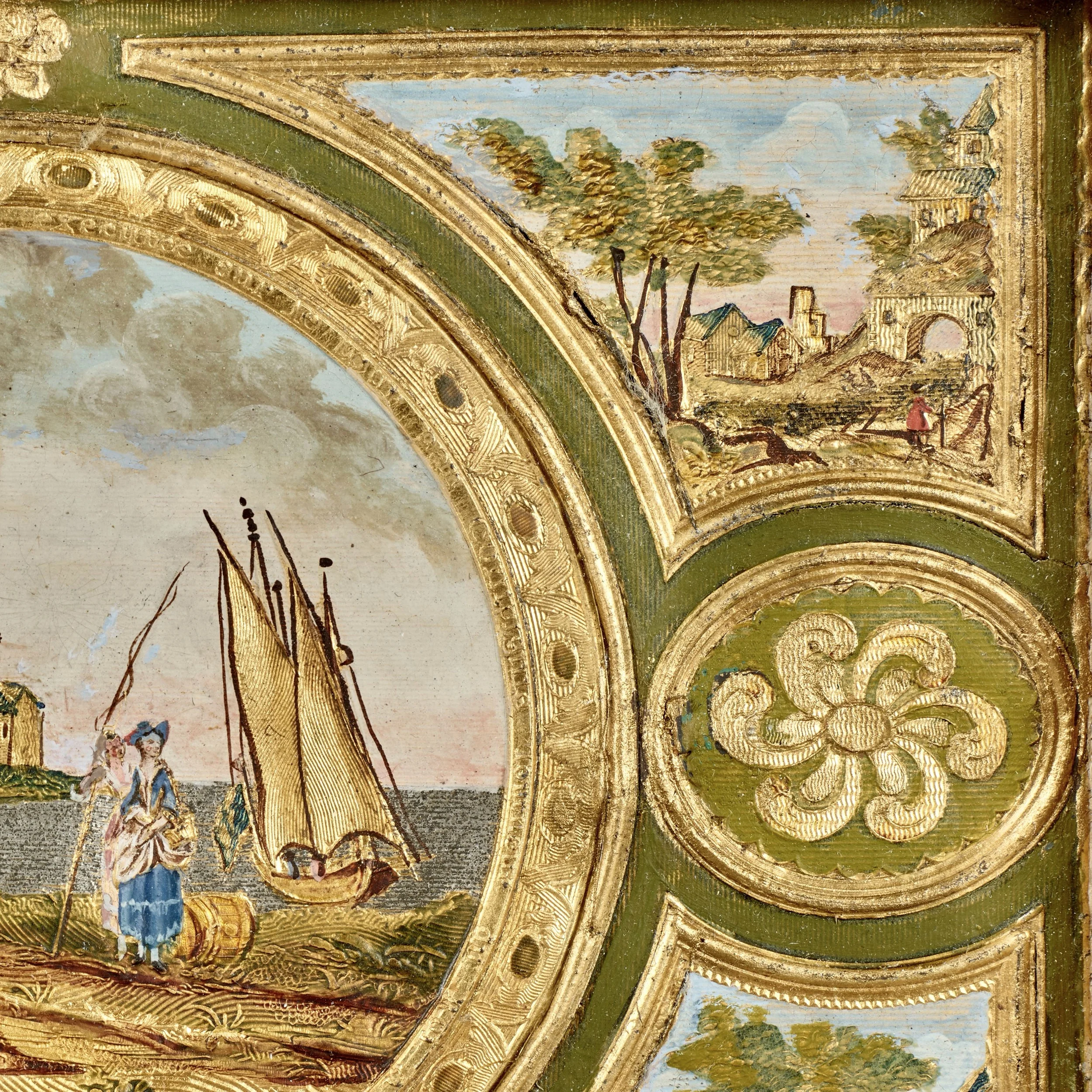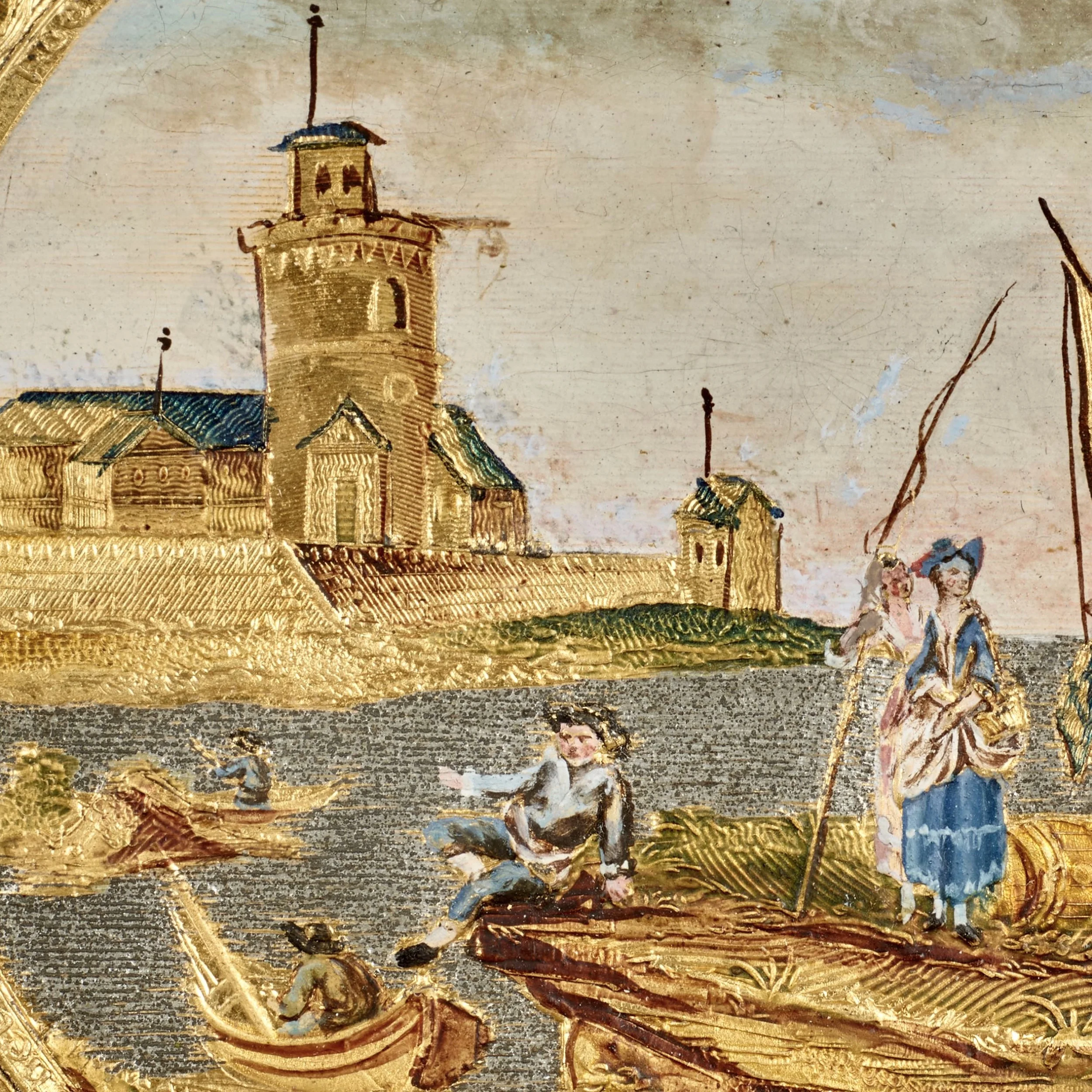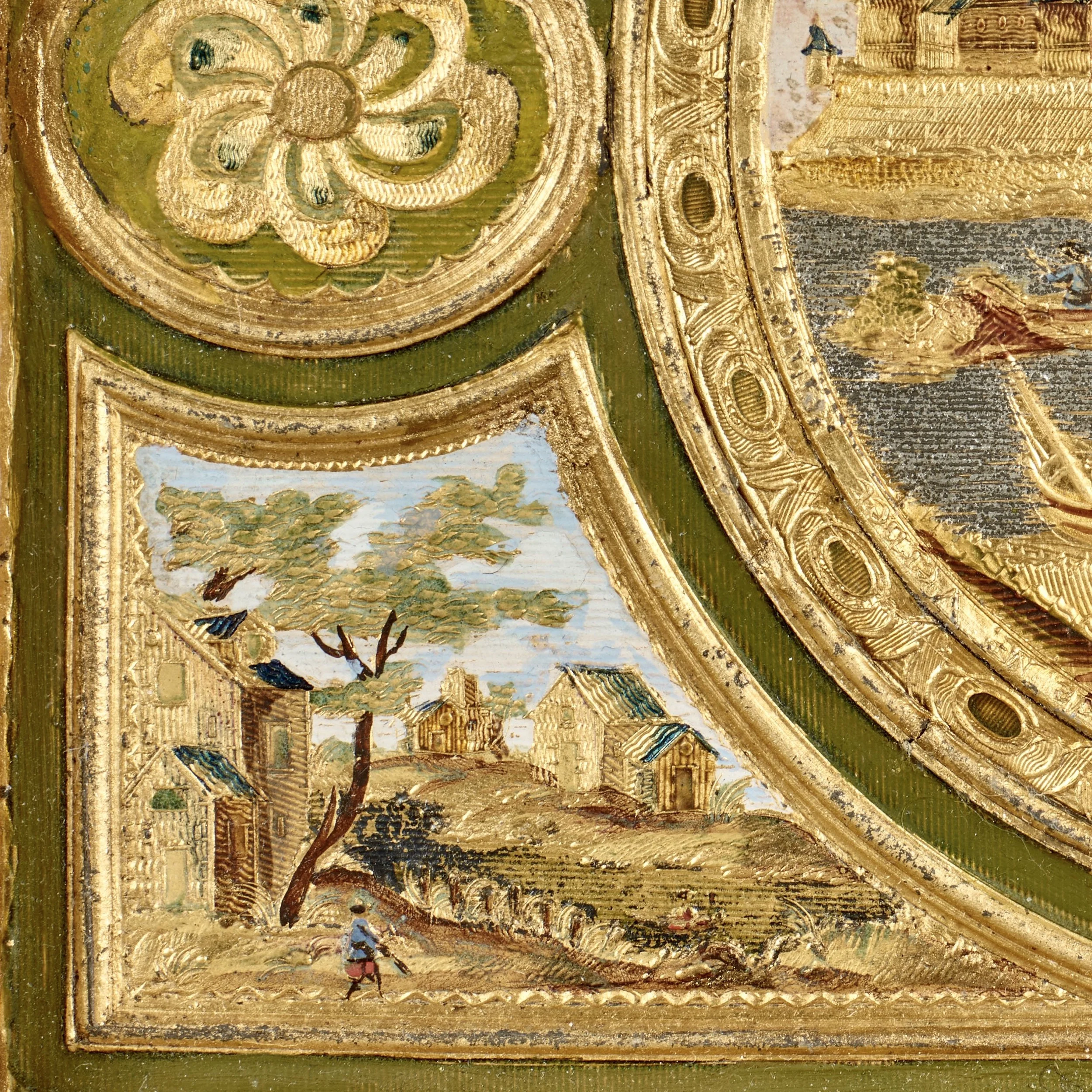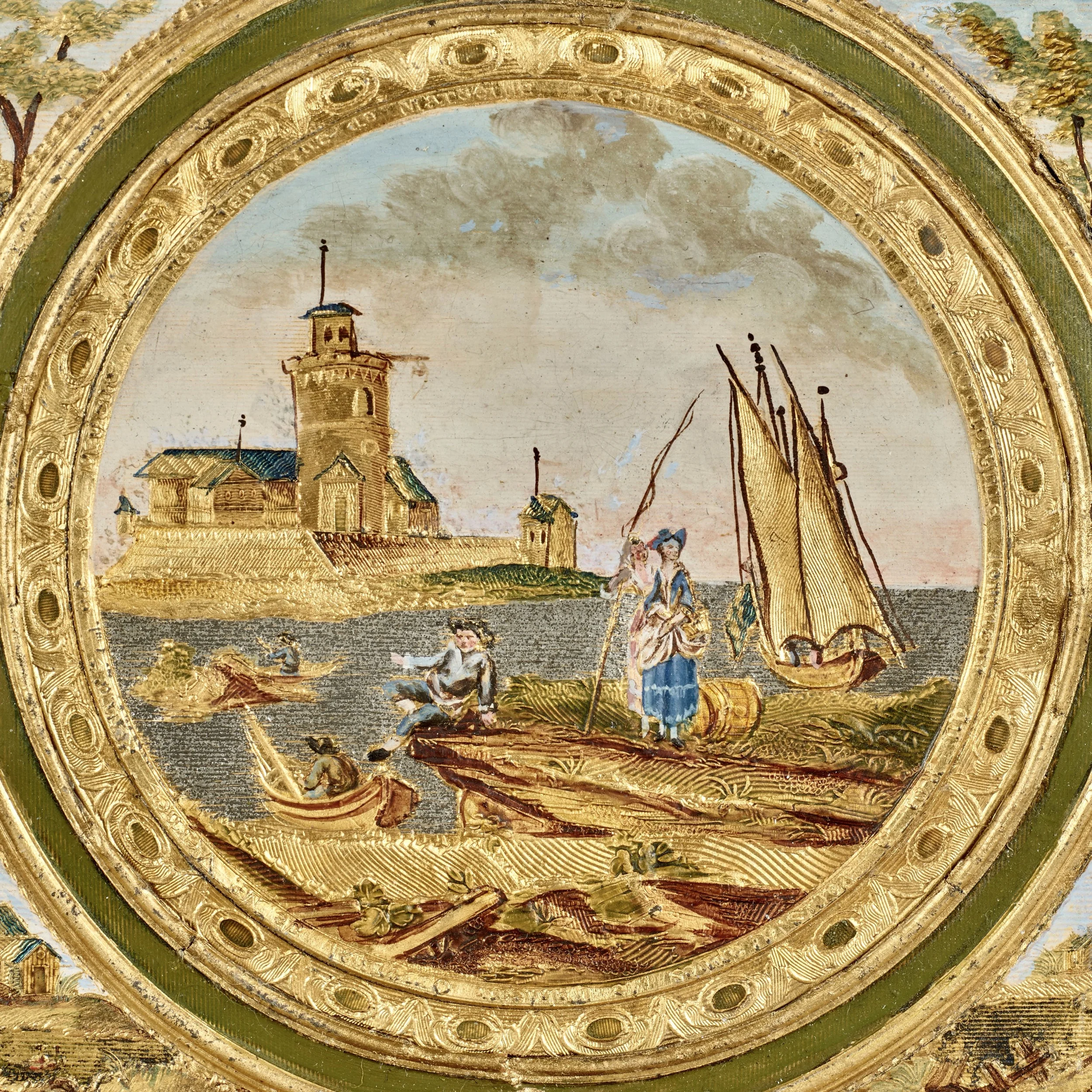Pair of rectangular Compigné paintings representing the port of Marseille
- Description
- Histoire
France, second half of the 18th century
Thomas Compigné
After a painting by Joseph Vernet, A view of the Saint-Jean Fountain in Marseille
Pewter, gold, and gouache
First painting with the inscription » Première vue de Marseille. Exécutée sur le tour par Compigné tourneur du Roi à Paris d’après le tableau original de Mr. Vernet peintre de sa Majesté » [Fist view of Marseille. Executed on the lathe by Compigné tourneur to the King in Paris after the original painting of Mr. Vernet painter to his Majesty].
Second painting bearing the inscription » Seconde vue de Marseille. Fontaine de St-Jean. Exécutée sur le tour par Compigné tourneur du Roi à Paris d’après le tableau original de Mr. Vernet peintre de sa Majesté » [Second view of Marseille. St-Jean Fountain. Executed on the lathe by Compigné tourneur to the King in Paris after the original painting of Mr. Vernet painter to his Majesty].
Length: 14,5 cm – 5 ½ inches
Length with frame: 18 cm – 7 inches
Width: 10 ‚5cm – 4 inches
Width with frame: 13,5 – 5 ½ inches
Comparable examples:
- Pierre-François Laurent, View of the Saint-Jean Fountain in Marseille, engraving, after Joseph Vernet’s painting A view of the Saint-Jean fountain in Marseille, circa 1750–1800, New York City, The Metropolitan Museum (inv. 53.600.1501)
- Thomas Compigné, Compigné medallion representing a view of the fountain Saint-Jean in Marseille, second half of the 18th century, after Joseph Vernet’s painting, A view of the Saint-Jean Foutain, in Marseille, Paris, Galerie Léage.
This pair of Compigné paintings overlooking the port of Marseille presents two canvases, both identical in their structure. They are composed of a central medallion featuring the main illustration, on either side of which are two elliptical medallions containing a floral motif. At each corner, the spandrels contain waterscapes depicting scenes of daily life. A few figures enliven these landscapes, punctuated by waterside dwellings and surrounded by vegetation. The omnipresence of water in the spandrels echoes the main view in the central medallion.
In the first painting of the pair, the central medallion features a maritime scene with a view of the port of Marseille, recognizable by the tower in the background, separated from the foreground by the sea on which a sailboat and a rowboat are sailing. The foreground depicts the coastline, with a woman holding a child and a fishing rod. To her right, a man climbs into a small boat, already carrying a fisherman.
The central medallion of the second painting in the pair depicts a view inside the port. People are seen filling barrels with water at the Saint-Jean fountain, then loading them into a boat. To the left, the mast of a boat balances the composition. Farther right, Fort Saint-Jean overlooks the port entrance. In the distance, a sailboat awaiting supplies interrupts the skyline, adding verticality to the scene.
The color of the pink-tinted sky in the central medallions and spandrels of the pair of paintings evokes the beginning of day and the awakening of a port at the heart of Marseille's economy.
Paintings in Compigné
Of great preciousness and variety of materials, Compigné paintings were made using a mysterious process: a sheet of tortoiseshell or cardboard to which tin or gold leaf was applied. The surface could then be decorated with gold, silver, gouache and colored varnishes. How the color, gold or silver was attached to the pewter remains a mystery today. These ‘miniatures’, known today as Compigné, were extremely popular in the 1760s. The small format, characteristic of this production, required extremely precise work, probably with the aid of a magnifying glass, to perfect technical details and colors.
Thomas Compigné
Arriving from Italy probably around 1750, Thomas Compigni took the name Compigné when he set up his shop, ‘Le Roi David’, in the Montorgueil neighborhood of Paris, Rue Greneta. As a tabletier, he specialized in the manufacture and sale of boxes, trictrac, a checkers and chess sets, snuffboxes and other cane handles in gold-encrusted blond tortoiseshell. Renowned for the quality of his objects, Thomas Compigné is one of the few 18th century tabletiers whose name is still known. Between 1766 and 1773, numerous gazettes praised his production of ‘very beautiful objects, inlaid with gold and of different colors, very solid [colors]’. They particularly describe his works, now known as ‘Compigné’. In 1773, he presented the King with two views of the Château de Saint-Hubert and was awarded the title of tabletier privilégié du Roi [King’s tabletier] under the reigns of Louis xv and Louis xvi. His favorite themes were views of towns, monuments and castles, set against parkland or landscapes animated by small figures.
Joseph Vernet (1714-1789), a marine painter
Trained in the southwest of France, Claude-Joseph Vernet was a promising young artist in the local circle from an early age. The Marquis de Caumont supported him in undertaking a journey to Rome in 1734. Rather than focusing on the study of Renaissance masters and classical art, he was drawn to landscape painters and marine artists, particularly the works of Claude Gellée, known as Le Lorrain. Vernet’s art found its true resonance in these genres, and his success among French, Italian, and English patrons was already evident during his Roman period. His name soon became renowned across Europe, a fame further enhanced by the travels of aristocrats undertaking the Grand Tour. In 1745, Joseph Vernet was admitted to the Académie royale de peinture et de sculpture. In 1753, he came back to France: first to Marseille, where he painted several views of the port from different angles, before settling in Paris. The Marquis de Marigny, Directeur Général des Bâtiments du Roi, commissioned him to paint 27 pictures depicting “the most beautiful ports in the kingdom”, one of the most important orders of his career. Although he completed only 15 of the planned canvases, which are now in the Musée National de la Marine and the Musée du Louvre, the Vues des Ports de Franceseries ensured his complete posterity.
Bibliography :
- Plaisir de France, « Les Compignés et leurs créateurs, ces délicats chefs‑d’œuvre de la tabletterie au xviiie siècle », n° 427, March 1975.
- Compigné, peintre et tabletier du Roy, catalogue d’exposition, Grasse, Villa-Musée Jean-Honoré Fragonard, June-July 1991.


